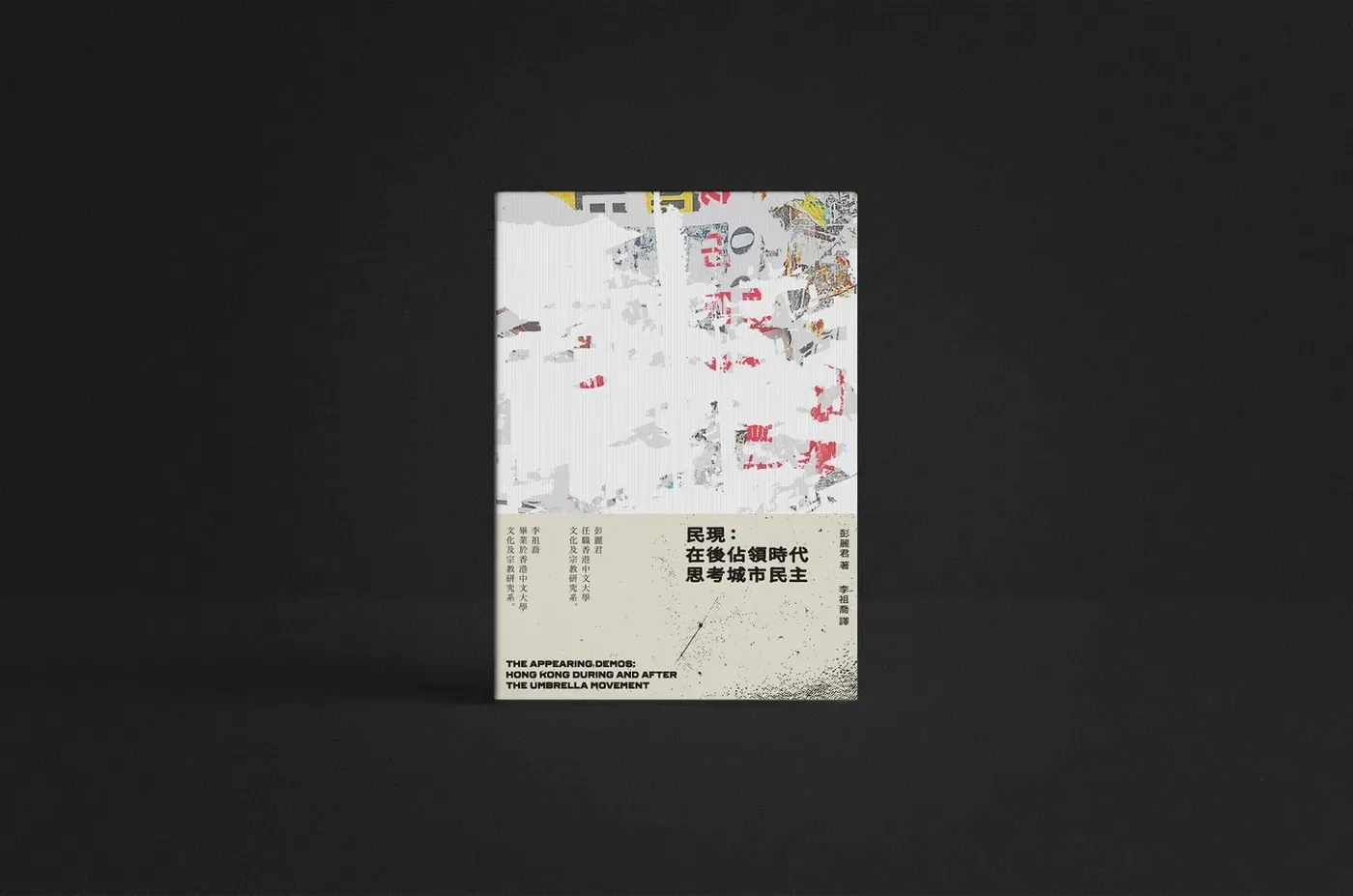《民現》講座筆記,也談幾件藝術作品(待續)
[首次在Matters發表作品]
彭麗君的英文著作The Appearing Demos: Hong Kong During and After the Umbrella Movement剛由李祖喬譯成中文《民現》,兩個版本相隔只有三個月。反送中2.0運動仍在進行,正有助大家深刻反思。https://typesetter.hk/2020/04/27/appearingdemos/
昨天有幸在新書發佈上開講,整理筆記,與讀者分享。
關於陸地、海洋、領土與城市思考:
· 講者林雪平議員提到領土中的陸地中心主義。我隨即想起幾個相關的藝術作品,有助我們從感觀反思我們對領土與邊界。
· 楊嘉輝的Liquid Border, 在邊境的鐵絲綱上收音,和作視覺田野紀錄──聲音和流水會有邊界嗎?https://www.thismusicisfalse.com/liquid-borders
· 蕭偉恆的InsideOutland/境內景外 關於「東方之珠」的神話。偷渡來港的先輩,在黑暗的大海裡不知方向,傳說只要向着有光的地方前進便是香港(唐書璇《再見中國》1972)。然而今日在下白泥、尖鼻咀、網井圍……資本高速發展的深圳,才是光之所在。
· 兩位藝術家,一位以聲音、一位以光影,來敲問邊界。
http://www.siuwaihang.net/InsideOutland/pro_inside_outland.html
· 自己刻下也在做一個關於南丫島的研究。只要看看不斷上漲的海水,把水泥路也覆蓋。便知一直受忽略的海洋,根本不容討價還價之地。離島雖為「新界」,卻與連接大陸的新界非常不同。原居民海員家庭四海為家,expat來自世界各地,構成多重的home hierarchy 。
關於文化研究
· Abbas的Politics of Disappearance,至今仍是不懂香港的學者的入門書,但也是一個沒有政治行動力的浪漫的咒詛。2005年攝影展覽《香港觀記》(Hong Kong Four-cast)中,Matthew Turner指名道姓直斥其非:”A decade ago the city was wresthed in disappearance. As time ran out on the Colony tourism peaked on apocalyphtic lures like see Hong Kong before it disappear! In turn, armchair travellers bought into literary critiques such as Hong Kong Culture and the Politics of Disappearance, and eschatology of local culture that presented the jittery city as knockdown proof of post-modern portents. Here it was implied, all the intellectual tropes of poststructuralist relativism, deconstruction and nostalgia had condensed on Hong Kong as it lived out Marx’s prophesy: all that was sold really was about to melt into air.” Turner感到欣喜的是,在2003年七一遊行之後,香港並沒有消失,而朱德華、劉清平、王希慎、王禾壁四位攝影藝術家,更以deadpan之姿,逼視在符號之下的真實(the real)。
· 《民現》這本著作雖然沒有點名批評Politics of Disappearance,但從書名亦可見出文化研究到底是否只是否定一切,使政治無從建立的思考遊戲。《民現》想要顯現的,並不單是香港,還示範了文化研究如何反思其學術本業,尤其它在香港的發展脈絡。
第四章 Occupy (Art)的政治
· 個人覺得是全書的點題一章。同時在處理藝術如何使demons和公共得以顯現,同時疏理從Arendt上溯到康德美學,在藝術自主與政治工具之間的兩難。今天時間不夠。會再補上。

終章:面具/ 口罩
· 書成之時,傘運(失效後)一度低落的抗爭又再湧現,著作雖然無法捕捉最新的事態發展。但在最後一章卻如預言般談到口罩的妙用:”the significant meanings of mask in Greek theatre: the mask hides or replace the actor’s face and countenance while still allowing the voice to sound. In other words, the mask could be understood as hypocrisy from a social and intersubjective point of view …The mask cover up the private person to allow them to engage with others publicly, but his mask is also artificial and impermanent, and the individual can pick it up and put it down at will.” 面具(V煞)與口罩,既是公民私人身份的保護,也同時是使之放下個人私利(小我),投入公共生活和政治行動的工具。
#民現:在後佔領時代思考城市民主
喜欢我的作品吗?别忘了给予支持与赞赏,让我知道在创作的路上有你陪伴,一起延续这份热忱!

- 来自作者
- 相关推荐